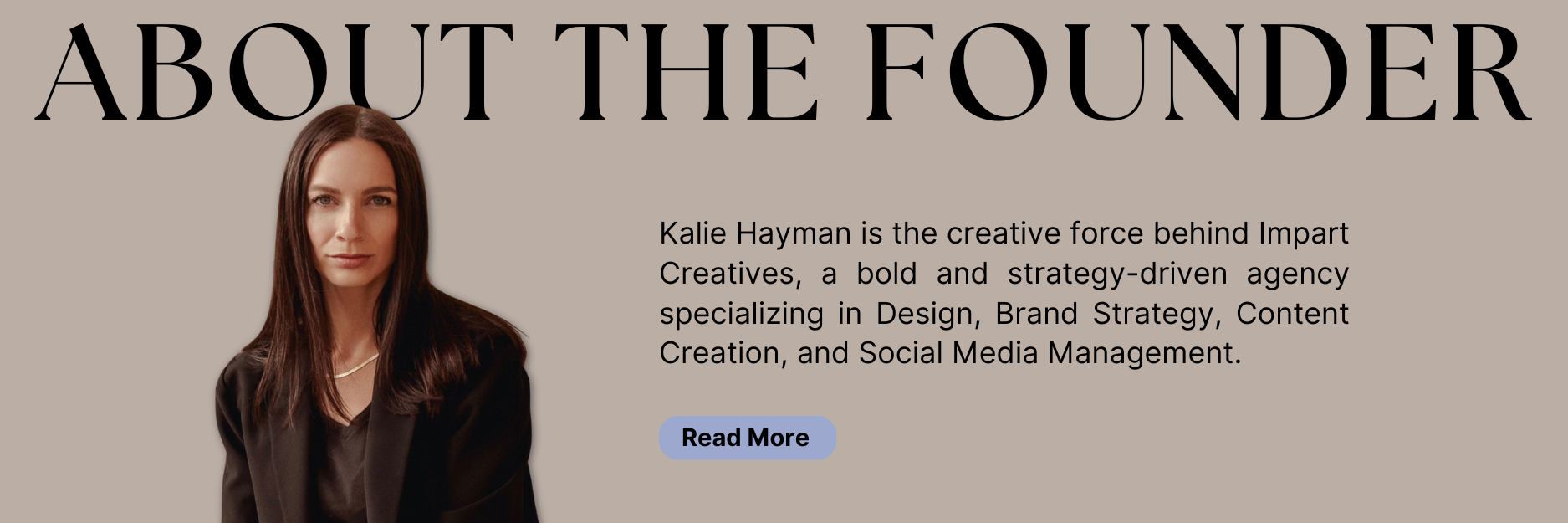Beyond Beige: How These Unexpected Colors Are Defining 2025’s Branding Landscape
If you’re still playing it safe with muted neutrals or overused millennial pink, it’s time to level up. Color is culture, and in 2025, brands that embrace unexpected, deeply resonant hues are leading the charge in fashion, CPG, and design.
From Puce’s rich nostalgia to Sinopia’s fiery edge, we’re breaking down the emerging color trends that are shaping brand identities—and the psychology behind why they’re working.
Why Color Matters More Than Ever
Gen Z and Millennials are rewriting the branding playbook. While minimalism and neutrals once reigned supreme, today's consumers crave emotion, personality, and visual storytelling in every aspect of design.
Color influences perception, and the right palette can instantly shape how a brand is received. The strategic use of color isn’t just about aesthetics—it’s about psychology, cultural movements, and the way consumers interact with products, packaging, and marketing.
So which colors are standing out in 2025? Let's dive in.
Sinopia (#CC3117): The Boldness of Deep Orange-Red
Sinopia is raw, fiery, and confident—a color with deep cultural roots in ancient pigments and modern design. This deep red-orange hue evokes passion, rebellion, and innovation, making it perfect for brands that want to be seen as cutting-edge.
Who’s Using it?
Glossier has played with bold, saturated reds in its packaging refresh, moving away from soft pinks to assert a more powerful, statement-driven look.
Jacquemus used burnt red-orange for its "Le Papier" collection campaign, leaning into the Mediterranean warmth and effortless French luxury the brand embodies.
CPG brands like Olipop and Poppi have embraced deep, citrusy reds in packaging to convey energy, vibrance, and a sense of health-forward indulgence.
How to Use Sinopia In Branding:
In packaging, it’s an attention-grabber. It signals urgency, making it a perfect choice for food, beauty, and lifestyle brands.
For fashion brands, it adds an element of warmth and modern edge to campaign visuals.
In graphic design, it works well as an accent against neutral or pastel palettes to create bold contrast.
Feldgrau (#33412F): The New Neutral for Earthy Brands
Think military-meets-modern, but with a softer, organic appeal. Feldgrau is a muted deep green with gray undertones, making it the perfect replacement for black in branding. It feels grounded, trustworthy, and subtly luxurious.
Who’s Using It?
Aesop has long championed deep, desaturated greens in its branding, signaling calm, sophistication, and a focus on nature-driven beauty.
J. Hannah, the cult-favorite minimalist jewelry brand, incorporates dusty, moody greens like Feldgrau into its aesthetic for a timeless, elevated feel.
Sustainable fashion brands like Another Tomorrow have been embracing deep forest greens in packaging and branding, signaling eco-consciousness without looking cliché.
How to Use Feldgrau in Branding:
In packaging and web design, it’s an elevated alternative to black or navy, keeping things sophisticated but fresh.
For wellness brands, it aligns with the trend of grounded, plant-based, and sustainable messaging.
Paired with warm tones (like Wheat or Chamoisee), it creates a heritage-inspired luxury feel.
Citron (#DACD48): The Playful Power of High-Energy Yellow
Citron sits between lemon and chartreuse, making it vibrant yet slightly unexpected. It’s a color that feels playful, creative, and full of life, resonating with brands that want to stand out while maintaining an element of sophistication.
Who’s Using It?
Ganni frequently plays with zesty yellows in their collections, leaning into the idea of joyful rebellion in fashion.
Erewhon, the cult organic grocery store, has used pops of bold yellows in its marketing and signage, reinforcing its youthful yet premium appeal.
Beauty brands like D.S. & Durga use citron hues in packaging to signal modernity and forward-thinking design.
How to Use Citron in Branding:
In packaging, it feels fresh and energetic—ideal for beauty, wellness, or premium snack brands.
As an accent color, it pairs beautifully with darker hues like Blue Slate or Feldgrau to add vibrancy without overwhelming a design.
Works well in social media branding where high-contrast colors stop the scroll.
Puce (#DC86A5) & Coral (#FBA0A3): The Evolution of Feminine Hues
Pink is having a renaissance—but not in the way you think. Puce and Coral are elevated, complex versions of traditional pinks, perfect for brands that want to tap into femininity without feeling cliché.
Who’s Using It?
Sandy Liang plays with dusty pinks and corals in her collections, redefining modern femininity in streetwear.
Our Place has used soft, muted corals in its product line, making cookware feel warm, inviting, and effortlessly cool.
Niche beauty brands like ROEN Beauty use warm, complex pinks in their branding to feel elevated yet inviting.
How to Use These Colors in Branding:
As a primary brand color, Puce or Coral can give beauty, fashion, or lifestyle brands an understated yet chic aesthetic.
In packaging, these hues create a soft, inviting feel without veering into overly sweet territory.
Works beautifully in interior branding (retail, café spaces) where a warm, approachable luxury vibe is key.
Big Picture: The Colors That Will Shape 2025
These aren’t just colors—they’re cultural signals. From the fiery edge of Sinopia to the nostalgic romance of Puce, brands that tap into emotional, story-driven color choices will stand out in 2025.
At Impart Creatives, we don’t just spot trends—we shape them. With our pulse on design and consumer psychology, we help brands stay ahead of the curve, making bold moves that feel fresh today and iconic tomorrow.
Ready to build a brand that looks as good as it feels? Let’s talk.






